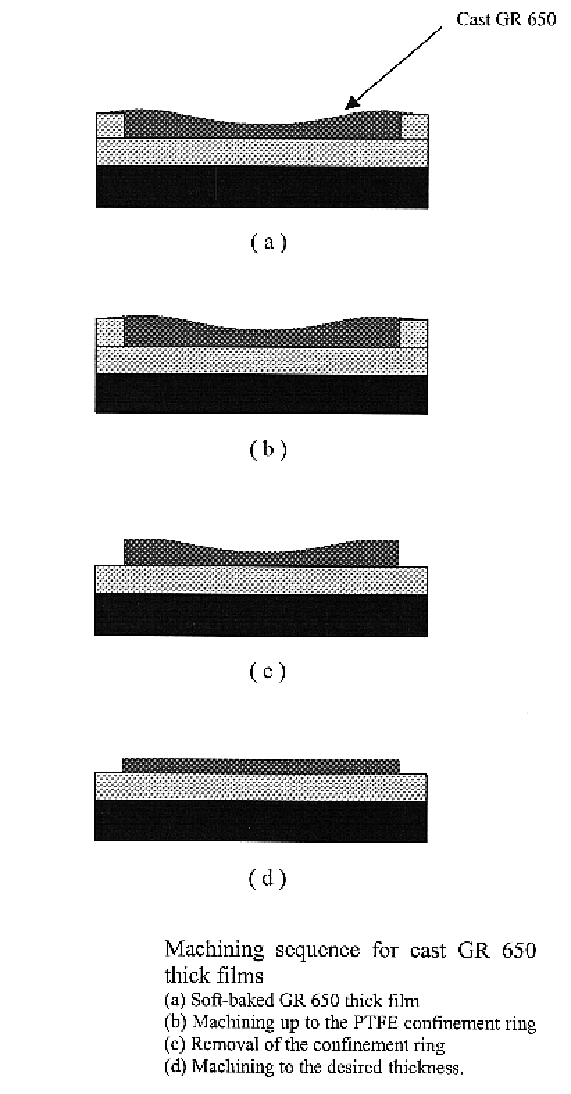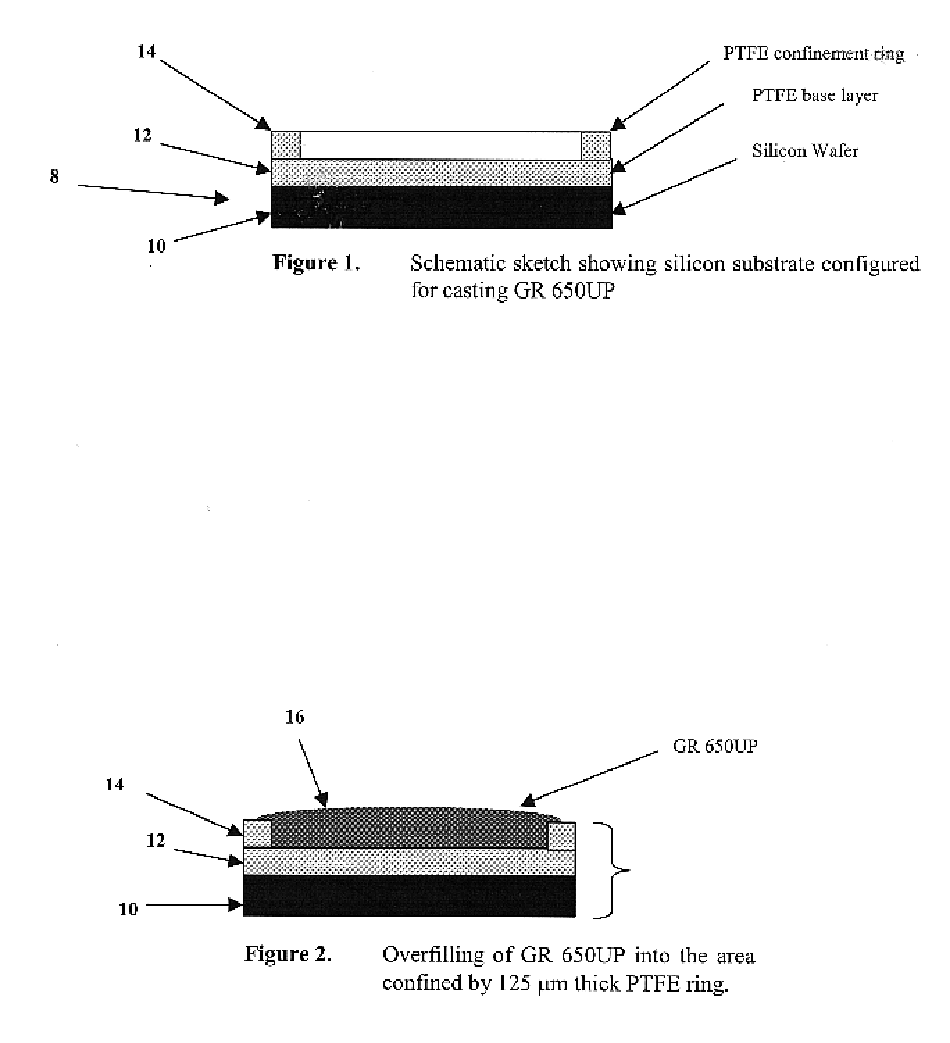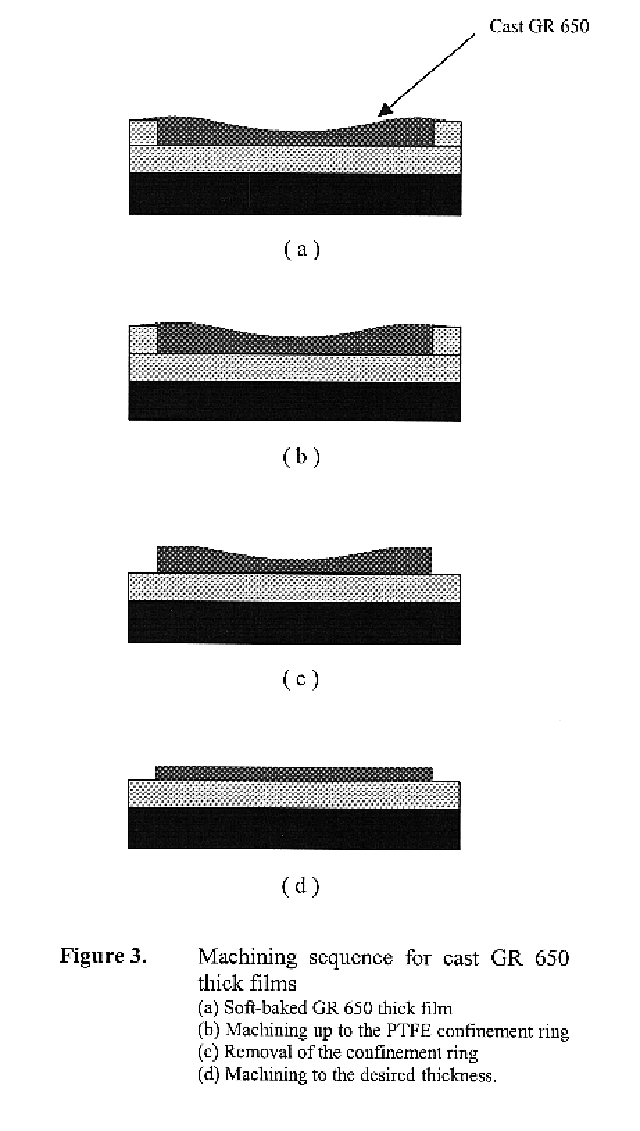Method of producing silica micro-structures from x-ray lithography of SOG materials
- Summary
- Abstract
- Description
- Claims
- Application Information
AI Technical Summary
Benefits of technology
Problems solved by technology
Method used
Image
Examples
example 1
A 125 .mu.m thick DF1200 PTFE film was bonded onto a standard 4" silicon wafer (crystal orientation being of no consequence). A 540 um-thick silicon wafer provided sufficient rigidity for the purpose. Care was taken to prevent trapping air pockets while bonding the PTFE film. Excess film was trimmed off the edges of the wafer. This layer of PTFE was called the `base layer`. Another 125 .mu.m thick PTFE film was then cut in the shape of a ring and bonded on top of the first PTFE layer. This PTFE ring known as the `confinement ring` had an inner diameter of 82 mm. The outer diameter was not critical and could be any value that would accommodate the ring on the silicon wafer. The built-up configuration enabled casting of GR 650UP into it.
GR 650 casting and soft-baking were carried out using the Heraeus oven in the clean room at the Institute for Micromanufacturing (IfM) in Ruston, La. The followings are the steps involved in obtaining a thick GR 650 casting:
1. The substrate with the PT...
example 2
Another experiment similar to Example 1 was carried out to obtain a hardened SOG material with a 200 um thickness. The conditions were substantially the same as in Example 1, but the confinement ring was increased to at least 200 um. Sufficient SOG material was placed in the confined area to fill it to a depth of 200 um. The procedure in Example 1 was modified in that the bake temperature was 150.degree. C. rather than 75.degree. C. The bake time and ramp-up / ramp-down rates were the substantially the same as in Example 1.
While the foregoing describes the invention in terms of specific embodiment, those of skill in the art will see many modifications and variations which are within the scope of the present invention. Some such modifications and variations are attached in the thesis of Vijay-Anandh Shanmugam, which is attached as Appendix 1 and incorporated by reference. All such modifications and variation are intended to come within the scope of the following claims.
References
Marzol...
PUM
 Login to View More
Login to View More Abstract
Description
Claims
Application Information
 Login to View More
Login to View More - R&D
- Intellectual Property
- Life Sciences
- Materials
- Tech Scout
- Unparalleled Data Quality
- Higher Quality Content
- 60% Fewer Hallucinations
Browse by: Latest US Patents, China's latest patents, Technical Efficacy Thesaurus, Application Domain, Technology Topic, Popular Technical Reports.
© 2025 PatSnap. All rights reserved.Legal|Privacy policy|Modern Slavery Act Transparency Statement|Sitemap|About US| Contact US: help@patsnap.com



